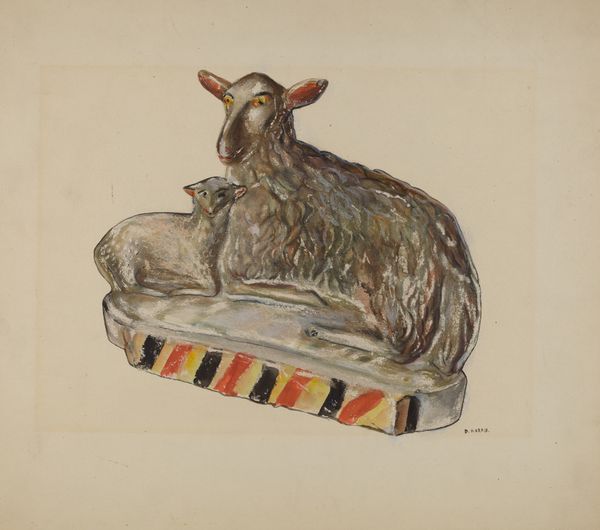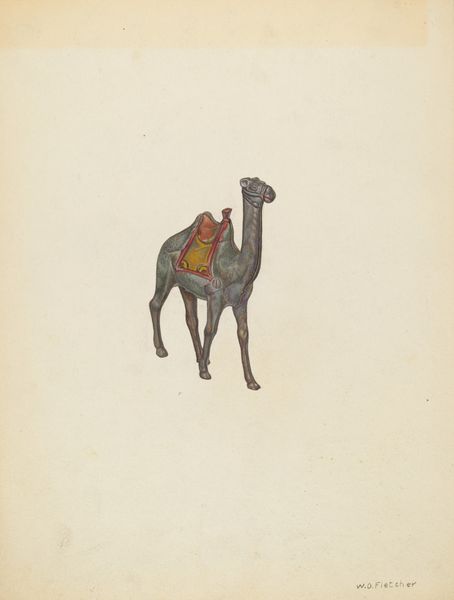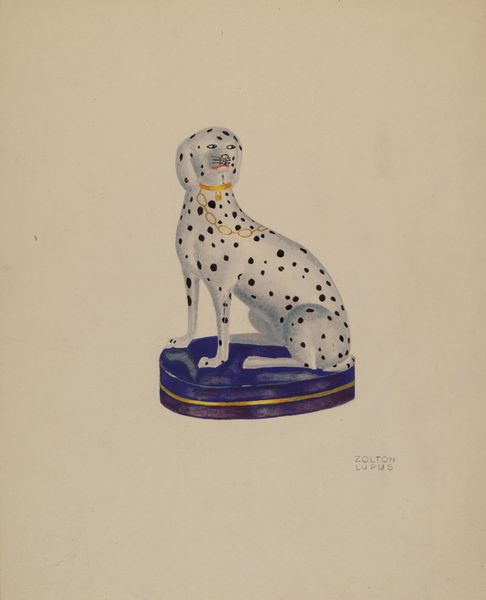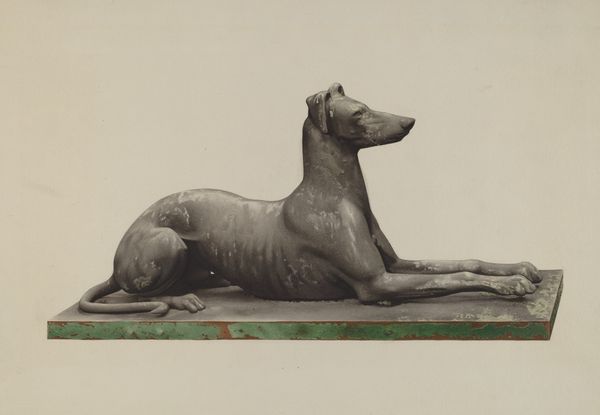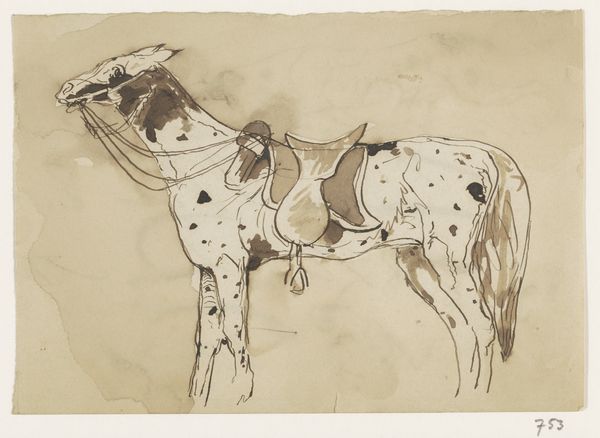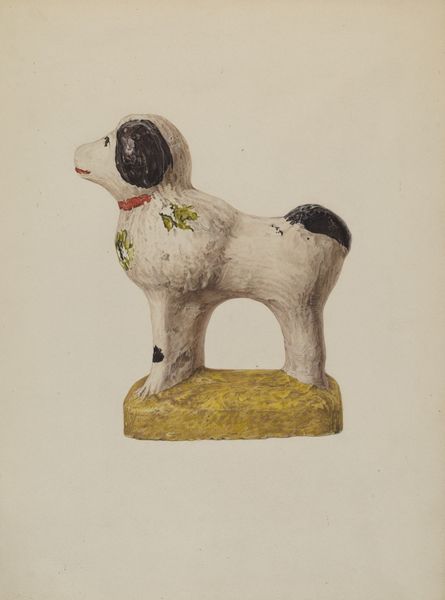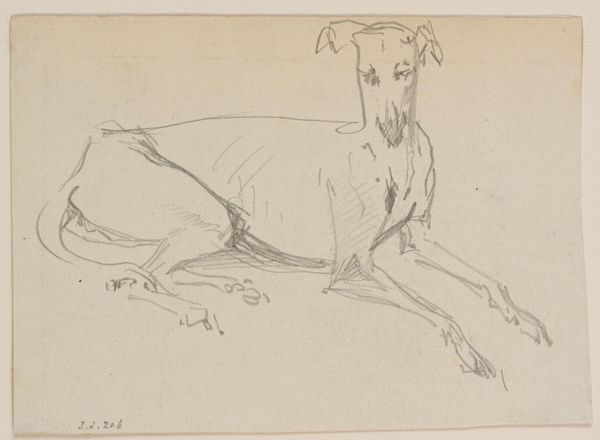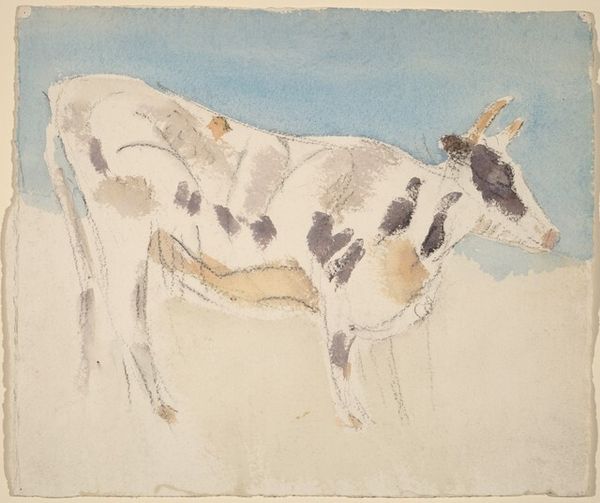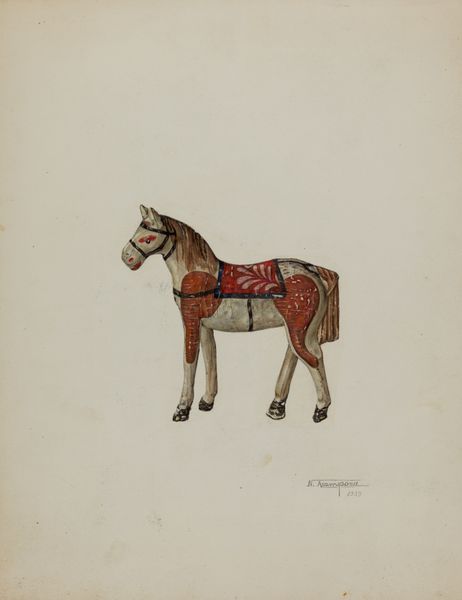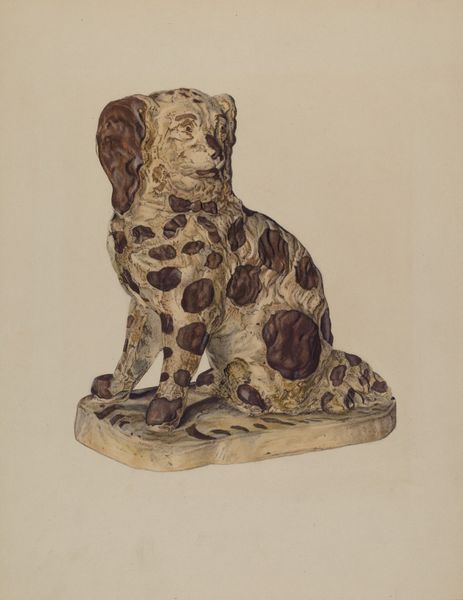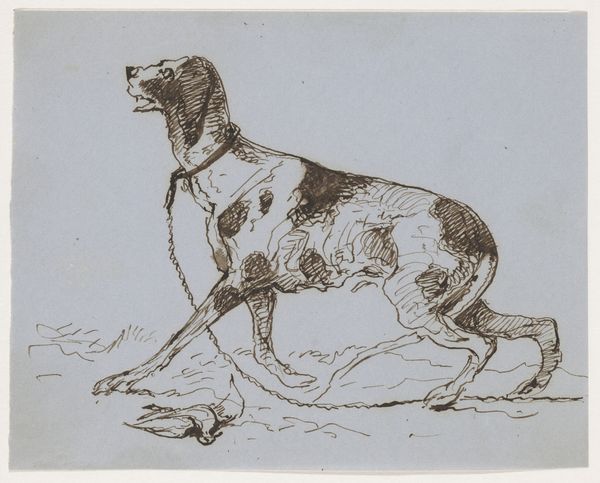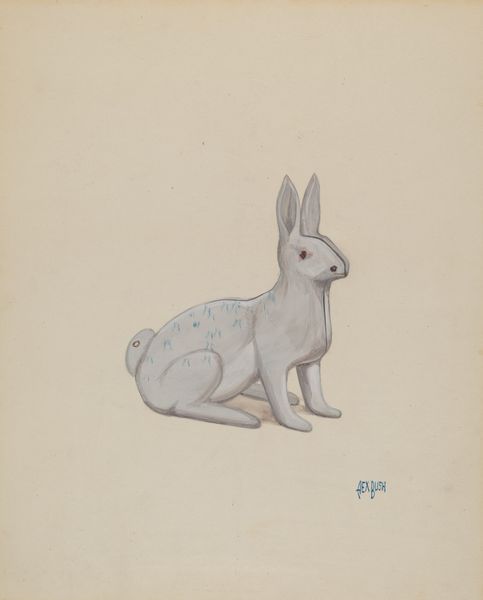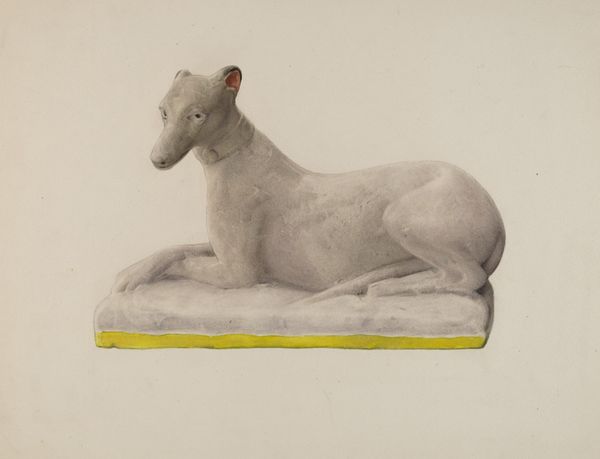
watercolor
#
portrait
#
watercolor
Dimensions: overall: 29.2 x 22.2 cm (11 1/2 x 8 3/4 in.)
Copyright: National Gallery of Art: CC0 1.0
Curator: H. Langdon Brown's watercolor, "Chalkware Deer," created around 1937, presents us with a charming, if somewhat enigmatic, portrayal of folk art. Editor: It has a rather naive and unsettling quality to it, wouldn't you say? The colours feel muted, and the deer’s expression is almost haunting. It reminds me of those toys kids break, yet we can't toss away. Curator: Indeed. Structurally, consider how the artist uses line to define form. The deer is simplified, almost abstracted, yet instantly recognizable. The color palette reinforces a subdued, nostalgic mood. The red elements provide a contrasting vibration. Editor: I find the use of “chalkware” in the title quite interesting, though. Knowing chalkware figurines were cheaply produced plaster items popular among working-class people at the time gives the work added resonance. There's an implied social context here. I wonder, did Brown deliberately choose watercolour to mimic the flat, matte appearance of chalkware, alluding to its origin? Curator: That's perceptive. Brown’s rendering elevates the chalkware figure into art. Look at how the details such as the painted black dots are carefully captured, and their placement informs the whole design! He acknowledges its material origins and cultural position, transforming it through aesthetic refinement. The red collar on the deer is, if I'm not mistaken, meant to serve as an exclamation mark to give this figure some sophistication, but it's hardly working that way. Editor: Absolutely! There's tension between the refined technique and the working-class roots, isn't there? In short, I keep wondering about accessibility and audience for something like chalkware and its elevation to art. Did these items decorate parlor rooms in the city? It makes you think. Curator: Ultimately, Brown’s study allows us to contemplate how the mundane is translated, through close observation and deft skill, into something genuinely intriguing. Editor: Precisely. And perhaps, what constitutes "high" art anyway when considering common materials and their accessibility to mass consumer culture.
Comments
No comments
Be the first to comment and join the conversation on the ultimate creative platform.
